Daniel A. Rabuzzi's Blog, page 13
August 7, 2011
With Eyes Like a Lynx: Using Computers to See The Otherwise Hidden
We love the ever-expanding use of digital tools, especially in the arts and humanities. Not only for what we learn about specific artists, aesthetics and audiences, but because using computers to analyze arts and letters helps us bridge the (artificial) divide between the Arts and the Sciences.
Bits and bytes are helping us reunite the Two Cultures of the 20th century, bringing us back to the integrated, holistic approach that existed at least until the early 19th century (yes, speaking here of Western learning and the so-called common era; Lobster & Canary is always curious to know more about how other traditions of inquiry have contemplated the issues discussed here). Echoes of the days when a Goethe focused on optics and color theory as much as poetry, when a Humphry Davy and an Erasmus Darwin expressed their chemical and biological findings in poetry, when a Shelley and his Romantic peers made technology and science the serious object of their poetry.
Back to the Lunar Society of Birmingham, and to Diderot and the Encyclopedistes in the 18th century!
Back, back to the Lincean Academy in 17th-century Rome, and the Dutch and German polymaths of that same era!
Back, back, back to Da Vinci, Alberti, and Aldus Manutius!
Two areas of computer-aided inquiry particularly intrigue us:
* Image analysis: Taking the venerable techniques of connoisseurship to new levels, computer scientists have recently put forth interesting hypotheses on image identification and artistic affinities.
For instance (chosen more or less at random from among many possible examples), here is the opening to "Image Processing for Artist Identification; Computerized Analysis of Vincent van Gogh's Brushstrokes" by C. Richard Johnson jr. et al. (IEEE Signal Processing Magazine, July 2008):
"As image data acquisition technology has advanced in the past decade, museums have
routinely begun to assemble vast digital libraries of images of their collections. The
cross-disciplinary interaction of image analysis researchers and art historians has reached a stage where technology developers can focus on image analysis tasks supportive of the art historian's mission of painting analysis in addition to activities in image acquisition, storage, and database search. In particular, the problem of artist identification seems ripe for the use of image processing tools. In making an attribution, experts often use not only
current knowledge of the artist's common practices, in combination with meticulous comparisons of a variety of technical data (acquired, e.g., through ultraviolet fluorescence, infrared reflectography, x-radiography, paint sampling, and/or canvas weave count ), but they also include a visual assessment of the presence of the artist's "handwriting" in the brushwork. This suggests that mathematical analysis of a painting's digital representation could assist the art expert in the process of attribution."
(For more, click here.)
* Textual analysis: Humanists of all stripes were among the first to see the benefits of digital tools, for everything from raw set-construction and recurrence compilation to sophisticated pattern recognition.
The journal Literary & Linguistic Computing is a good gateway. Here you find articles like these:
"Constructing readings of damaged and abraded ancient documents is a difficult, complex, and a time-consuming task. It frequently involves reference to a variety of linguistic and archaeological datasets and the integration of previous knowledge of similar documentary material. Due to the involved and lengthy reading process, it is often difficult to record and recall how the final interpretation of the document was reached and which competing hypotheses were presented, adopted, or discarded in the process of reading. This article discusses the development of the application called DUGA, which uses Decision Support System (DSS) technology to aid the day-to-day reading of damaged documents. Such an application will facilitate the process of transcribing texts by providing a framework in which scholars can record, track, and trace their progress. DUGA will include a word search facility of external resources such as the Vindolanda ink tablets through the knowledge base Web Service called APPELLO. This functionality will support the scholars through their reading process by suggesting words, which may confirm current interpretations or inspire new ones. Furthermore, DUGA will allow continuity between working sessions, and the complete documentation of the reading process, that has hitherto been implicit in published editions." [Abstract for "Towards a decision support system for reading ancient documents," by Henriette Roued-Cunliffe, in the December, 2010 issue].
"The use of corpus material and methods represents a major methodological innovation in Chinese historical linguistics. The very exciting findings uncovered in this article may be seen as the first systematic large-scale investigation of the various morpho-syntactic patterns underpinning the evolution of Chinese lexis. In this article, we have made a ground-breaking investigation into the diverse lexical modes and patterns which have emerged and developed in each major period in Chinese history, in which the generation of corpus linguistic data and the subsequent computational statistical modelling have been essential." [Abstract of "A corpus-based study of lexical periodization in historical Chinese,' by Meng Ji, in June, 2010 issue].
"This article provides quantitative evidence for a hypothesis concerning fourth-century translations of Indian Buddhist texts from Prakrit and Sanskrit into Chinese. Using a Variable Length n-Gram Feature Extraction Algorithm, principal component analysis and average linkage clustering we are able to show that 24 sutras, attributed by the tradition to different translators, were in fact translated by the same translator or group of translators. Since part of our method is based on assigning weight to n-grams, the analysis is capable of yielding distinctive features, i.e. strings of Chinese characters, that are characteristic of the translator(s). This is the first time that these techniques have successfully been applied to medieval Chinese texts. The results of this study open up a number of new directions for the lexicographic and syntactic study of early Chinese translations of Buddhist texts." [Abstract for "Quantitative evidence for a hypothesis regarding the attribution of early Buddhist translations, " by Jen-Jou Hung, Marcus Bingenheimer and Simon Wiles, in April, 2010 issue}.
For more from Literary & Linguistic Computing, click here .Daniel A. Rabuzzi is author of the fantasy novel "The Choir Boats," available from ChiZine Publications in September 2009.
"The Choir Boats" explores issues of race, gender, sin, and salvation, and includes a mysterious letter, knuckledogs, carkodrillos, smilax root,
goat stew, and one very fierce golden cat.
(www.danielarabuzzi.com). Daniel blogs at Lobster & Canary about speculative fiction, poetry, history and the arts.
Bits and bytes are helping us reunite the Two Cultures of the 20th century, bringing us back to the integrated, holistic approach that existed at least until the early 19th century (yes, speaking here of Western learning and the so-called common era; Lobster & Canary is always curious to know more about how other traditions of inquiry have contemplated the issues discussed here). Echoes of the days when a Goethe focused on optics and color theory as much as poetry, when a Humphry Davy and an Erasmus Darwin expressed their chemical and biological findings in poetry, when a Shelley and his Romantic peers made technology and science the serious object of their poetry.
Back to the Lunar Society of Birmingham, and to Diderot and the Encyclopedistes in the 18th century!
Back, back to the Lincean Academy in 17th-century Rome, and the Dutch and German polymaths of that same era!
Back, back, back to Da Vinci, Alberti, and Aldus Manutius!
Two areas of computer-aided inquiry particularly intrigue us:
* Image analysis: Taking the venerable techniques of connoisseurship to new levels, computer scientists have recently put forth interesting hypotheses on image identification and artistic affinities.
For instance (chosen more or less at random from among many possible examples), here is the opening to "Image Processing for Artist Identification; Computerized Analysis of Vincent van Gogh's Brushstrokes" by C. Richard Johnson jr. et al. (IEEE Signal Processing Magazine, July 2008):
"As image data acquisition technology has advanced in the past decade, museums have
routinely begun to assemble vast digital libraries of images of their collections. The
cross-disciplinary interaction of image analysis researchers and art historians has reached a stage where technology developers can focus on image analysis tasks supportive of the art historian's mission of painting analysis in addition to activities in image acquisition, storage, and database search. In particular, the problem of artist identification seems ripe for the use of image processing tools. In making an attribution, experts often use not only
current knowledge of the artist's common practices, in combination with meticulous comparisons of a variety of technical data (acquired, e.g., through ultraviolet fluorescence, infrared reflectography, x-radiography, paint sampling, and/or canvas weave count ), but they also include a visual assessment of the presence of the artist's "handwriting" in the brushwork. This suggests that mathematical analysis of a painting's digital representation could assist the art expert in the process of attribution."
(For more, click here.)
* Textual analysis: Humanists of all stripes were among the first to see the benefits of digital tools, for everything from raw set-construction and recurrence compilation to sophisticated pattern recognition.
The journal Literary & Linguistic Computing is a good gateway. Here you find articles like these:
"Constructing readings of damaged and abraded ancient documents is a difficult, complex, and a time-consuming task. It frequently involves reference to a variety of linguistic and archaeological datasets and the integration of previous knowledge of similar documentary material. Due to the involved and lengthy reading process, it is often difficult to record and recall how the final interpretation of the document was reached and which competing hypotheses were presented, adopted, or discarded in the process of reading. This article discusses the development of the application called DUGA, which uses Decision Support System (DSS) technology to aid the day-to-day reading of damaged documents. Such an application will facilitate the process of transcribing texts by providing a framework in which scholars can record, track, and trace their progress. DUGA will include a word search facility of external resources such as the Vindolanda ink tablets through the knowledge base Web Service called APPELLO. This functionality will support the scholars through their reading process by suggesting words, which may confirm current interpretations or inspire new ones. Furthermore, DUGA will allow continuity between working sessions, and the complete documentation of the reading process, that has hitherto been implicit in published editions." [Abstract for "Towards a decision support system for reading ancient documents," by Henriette Roued-Cunliffe, in the December, 2010 issue].
"The use of corpus material and methods represents a major methodological innovation in Chinese historical linguistics. The very exciting findings uncovered in this article may be seen as the first systematic large-scale investigation of the various morpho-syntactic patterns underpinning the evolution of Chinese lexis. In this article, we have made a ground-breaking investigation into the diverse lexical modes and patterns which have emerged and developed in each major period in Chinese history, in which the generation of corpus linguistic data and the subsequent computational statistical modelling have been essential." [Abstract of "A corpus-based study of lexical periodization in historical Chinese,' by Meng Ji, in June, 2010 issue].
"This article provides quantitative evidence for a hypothesis concerning fourth-century translations of Indian Buddhist texts from Prakrit and Sanskrit into Chinese. Using a Variable Length n-Gram Feature Extraction Algorithm, principal component analysis and average linkage clustering we are able to show that 24 sutras, attributed by the tradition to different translators, were in fact translated by the same translator or group of translators. Since part of our method is based on assigning weight to n-grams, the analysis is capable of yielding distinctive features, i.e. strings of Chinese characters, that are characteristic of the translator(s). This is the first time that these techniques have successfully been applied to medieval Chinese texts. The results of this study open up a number of new directions for the lexicographic and syntactic study of early Chinese translations of Buddhist texts." [Abstract for "Quantitative evidence for a hypothesis regarding the attribution of early Buddhist translations, " by Jen-Jou Hung, Marcus Bingenheimer and Simon Wiles, in April, 2010 issue}.
For more from Literary & Linguistic Computing, click here .Daniel A. Rabuzzi is author of the fantasy novel "The Choir Boats," available from ChiZine Publications in September 2009.
"The Choir Boats" explores issues of race, gender, sin, and salvation, and includes a mysterious letter, knuckledogs, carkodrillos, smilax root,
goat stew, and one very fierce golden cat.
(www.danielarabuzzi.com). Daniel blogs at Lobster & Canary about speculative fiction, poetry, history and the arts.
Published on August 07, 2011 08:56
July 31, 2011
Hobbits in Fiscal-Land (And a Nod to Daniel Abraham)
Middle Earth found itself embroiled this week in the American debt ceiling and budget negotiations, as the Wall Street Journal labeled the Tea Partiers "debt-limit hobbits." Senator McCain quoted at length from the WSJ editorial on Wednesday, sparking a series of Tolkien-inspired retorts from the Tea Party (among others, Senator Rand Paul said he would rather be a hobbit than a troll) and commentary from Stewart and Colbert, all of which led the WSJ to editorialize again yesterday about hobbits as relating to the current financial debate.
Two thoughts come to mind, one particular, one general:
* To the extent that there is a tea party and an extremely urgent time limit, and a set of definitions, principles and posturings that seem to hail from the other side of the looking glass, I think we are in the adventures of Alice rather than those of Frodo & Sam.
* Middle Earth, and very nearly all other worlds created within speculative fiction, is curiously devoid of financial elements. In most fantasy worlds-- no matter how gritty and real-- the economy is primitive, formal economic principles unstated or unknown, the study of economics non-existent or, at best, ill-defined. Middle Earth is seemingly a cash-&-carry place, without fiscal policy or possibly any taxation whatsoever-- these matters simply do not rise to the level of importance held by, say, rings of power, the flight of the elves, and the return of the king. Dragons and dwarves make terrible bankers, being content to hoard without circulating wealth, let alone extend credit. (Smaug's reaction to a withdrawal from his accumulated riches is not one intended to gain him a commercial franchise). For the most part, "the merchant" is a stock figure in fantasy, especially of the swords-&-sorcery variety, but the mechanics of wealth creation, of investment, risk, innovation, return, etc. find no foothold in the genre.
All of which is a pity because the genre would benefit from including economic and financial aspects in the plot and in the development of characters. The majority of generic fantasy worlds are modeled on medieval Europe... yet, by 1200 western Europe had built a sophisticated economy based on technological gain, division of labor, local markets, long-distance trade, nuanced and voluminous banking networks, and emerging states increasingly successful in gathering tax and creating currency. The sophistication is even greater in the medieval Islamic world and in the Chinese Empire.
(A wonderful exception to genre fantasy's economics blindspot: Daniel Abraham, whose Long Price quartet and The Dragon's Path make the workings of trade and finance integral to the plot; he has clearly studied Renaissance Italian banking and merchanting, and put what he learned to very good use.)
So, if by "hobbit" the Wall Street Journal and Senator McCain mean "economic know-nothings", the appellation is pretty close to the mark. It remains to be seen if other hobbitish traits are in evidence as well, for instance, the hobbits' great common sense and pragmatic nature, and -- above all-- their deep caring for one another, especially in times of dearth. The hobbits triumphed, not because they sought or wielded great power, but because they took pains to care for their little Elanors and their Old Tooks. In the end, their larders are full and they have in their dwellings items worth more-- as Gandalf says to Thorin Oakenshield--than those in the halls of some dwarves.Daniel A. Rabuzzi is author of the fantasy novel "The Choir Boats," available from ChiZine Publications in September 2009.
"The Choir Boats" explores issues of race, gender, sin, and salvation, and includes a mysterious letter, knuckledogs, carkodrillos, smilax root,
goat stew, and one very fierce golden cat.
(www.danielarabuzzi.com). Daniel blogs at Lobster & Canary about speculative fiction, poetry, history and the arts.
Two thoughts come to mind, one particular, one general:
* To the extent that there is a tea party and an extremely urgent time limit, and a set of definitions, principles and posturings that seem to hail from the other side of the looking glass, I think we are in the adventures of Alice rather than those of Frodo & Sam.
* Middle Earth, and very nearly all other worlds created within speculative fiction, is curiously devoid of financial elements. In most fantasy worlds-- no matter how gritty and real-- the economy is primitive, formal economic principles unstated or unknown, the study of economics non-existent or, at best, ill-defined. Middle Earth is seemingly a cash-&-carry place, without fiscal policy or possibly any taxation whatsoever-- these matters simply do not rise to the level of importance held by, say, rings of power, the flight of the elves, and the return of the king. Dragons and dwarves make terrible bankers, being content to hoard without circulating wealth, let alone extend credit. (Smaug's reaction to a withdrawal from his accumulated riches is not one intended to gain him a commercial franchise). For the most part, "the merchant" is a stock figure in fantasy, especially of the swords-&-sorcery variety, but the mechanics of wealth creation, of investment, risk, innovation, return, etc. find no foothold in the genre.
All of which is a pity because the genre would benefit from including economic and financial aspects in the plot and in the development of characters. The majority of generic fantasy worlds are modeled on medieval Europe... yet, by 1200 western Europe had built a sophisticated economy based on technological gain, division of labor, local markets, long-distance trade, nuanced and voluminous banking networks, and emerging states increasingly successful in gathering tax and creating currency. The sophistication is even greater in the medieval Islamic world and in the Chinese Empire.
(A wonderful exception to genre fantasy's economics blindspot: Daniel Abraham, whose Long Price quartet and The Dragon's Path make the workings of trade and finance integral to the plot; he has clearly studied Renaissance Italian banking and merchanting, and put what he learned to very good use.)
So, if by "hobbit" the Wall Street Journal and Senator McCain mean "economic know-nothings", the appellation is pretty close to the mark. It remains to be seen if other hobbitish traits are in evidence as well, for instance, the hobbits' great common sense and pragmatic nature, and -- above all-- their deep caring for one another, especially in times of dearth. The hobbits triumphed, not because they sought or wielded great power, but because they took pains to care for their little Elanors and their Old Tooks. In the end, their larders are full and they have in their dwellings items worth more-- as Gandalf says to Thorin Oakenshield--than those in the halls of some dwarves.Daniel A. Rabuzzi is author of the fantasy novel "The Choir Boats," available from ChiZine Publications in September 2009.
"The Choir Boats" explores issues of race, gender, sin, and salvation, and includes a mysterious letter, knuckledogs, carkodrillos, smilax root,
goat stew, and one very fierce golden cat.
(www.danielarabuzzi.com). Daniel blogs at Lobster & Canary about speculative fiction, poetry, history and the arts.
Published on July 31, 2011 04:55
July 24, 2011
Rod Serling in Ithaca; Phantasmaphile Covers Vienna; The Cascadian Subduction Zone, and Sundry Other Good Things
We're melting like votive candles here in New York City, smothered by record-setting heat and humidity along with the rest of the Northeast. Too hot and exhausted to think original thoughts, the lobster and the canary will instead find refuge in the cool ideas of others.
Some recent good things that have landed in our mailbox:
* The Rod Serling Conference at Ithaca College (NY): Elena Pizarro writes to announce that this year's conference takes place September 9-10. Serling taught at Ithaca College 1967-1975; the college houses his archives. Click here for more information.
* Valerie McKenzie sends her gallery's summer newsletter (McKenzie Fine Art is on W. 25th in Manhattan). She represents some very interesting, and underrated, artists- I especially love Jim Dingilian's spectral etchings inside bottles ("Hiding Places: Memory in Art"). Click here for more.
* Pam Grossman is always cutting-edge! On her blog Phantasmaphile she finds the most interesting art with a baroque, occult and fabulistic mentality. Recently she noted the opening of the Phantasten Museum in Vienna ("visionary art/ fantastic realism/ surrealism")-- like her, Lobster & Canary want to go! For more, click here and here .
* The Boston Review 's latest is out. The BR offers, besides its incisive political and investigative reporting, some of the best fiction anywhere. (With Junot Diaz as their fiction editor, how could they not?) Among other things, they published NoViolet Bulawayo's Caine Prize-winning short story last year. Click here for more.
* Aqueduct Press has launched The Cascadian Subduction Zone: A Literary Quarterly -- the third issue just arrived, and it continues this newcomer's strong debut. Kristin King's feature essay "Can Science Fiction Change the World?" should prompt thoughtful debate. Also, many good book reviews, plus suitably strange artwork by "Mr. Mead." Check it out here.
* Charity Shumway writes to announce the launch of an urban gardening & cookery site, Spade & Spatula ("growing and cooking in the city"). Great quick recipes, anecdotes, and luscious photographs of tomatoes, flowers, pie, vases... Makes us hungry for brunch. Check it out here.
* The Academy of American Poets July newsletter includes a provocative interview with Kenneth Goldsmith, who says (among other things): "The best thing about conceptual poetry is that it doesn't need to be read. You don't have to read it. As a matter of fact, you can write books, and you don't even have to read them." Click here for more.
* Omnidawn's blog continues to share generously of their writers' work. Most recently I have been struck by Christine Hume's "Self-Stalked," which starts this way: "I looked in all eight directions then spread out my tiger's skin. Before the public mind kicked in, I surveyed an inner shore. Its facets operated on me. I lost my lights and began my midnight thus: mental feet, mental lake, little mental pines, mental mile around the muzzle." And also Aaron Shurin's "Bruja," which opens: "Alcove of the shade tree, under which they neck and whisper… and gather their tribe. She stencils the tilt of their heads from her perch on the iron bench, their dreamy eyes and smiles. Migrating neurons: It's as if a baton streaking the air laid them bodily onto her page…" Click here for more.
* The Pedestal Magazine's June issue features speculative poetry selected by Marge Simon and Bruce Boston, and a range of other good items. I particularly liked Steven Peck's "The Complete Text of the First Ten Volumes of Dr. Fleckwain's Very, Very Short Steampunk Novels," and JoSelle Vanderhooft's review of God's Optimism by Yehoshua November. Vanderhooft: "This near-mystical belief in the goodness of God, God's love, and the worthiness of human life reflect the optimism that underpins this all-too-small collection, whether its contents deal with joy or sorrow, divinity or earthliness, the spiritual or the secular. In most cases, these poems incorporate all of the above simultaneously. For these are poems about what it means to dwell in an imperfect and painful world that is nonetheless touched by the divine—or, as November said in a recent interview with The Jewish Week when explaining a teaching of the kabala, a Jewish mystical text: 'God created the world because he wanted to dwell in the lowest realm, our realm.' Thus, the most intensely spiritual moments in God's Optimism delineate not grandiose gestures or Technicolor visions, but quiet encounters, as sharp as a needle and often unexpected." Well said! Click here for more... and then stay cool in the heatwave.Daniel A. Rabuzzi is author of the fantasy novel "The Choir Boats," available from ChiZine Publications in September 2009.
"The Choir Boats" explores issues of race, gender, sin, and salvation, and includes a mysterious letter, knuckledogs, carkodrillos, smilax root,
goat stew, and one very fierce golden cat.
(www.danielarabuzzi.com). Daniel blogs at Lobster & Canary about speculative fiction, poetry, history and the arts.
Some recent good things that have landed in our mailbox:
* The Rod Serling Conference at Ithaca College (NY): Elena Pizarro writes to announce that this year's conference takes place September 9-10. Serling taught at Ithaca College 1967-1975; the college houses his archives. Click here for more information.
* Valerie McKenzie sends her gallery's summer newsletter (McKenzie Fine Art is on W. 25th in Manhattan). She represents some very interesting, and underrated, artists- I especially love Jim Dingilian's spectral etchings inside bottles ("Hiding Places: Memory in Art"). Click here for more.
* Pam Grossman is always cutting-edge! On her blog Phantasmaphile she finds the most interesting art with a baroque, occult and fabulistic mentality. Recently she noted the opening of the Phantasten Museum in Vienna ("visionary art/ fantastic realism/ surrealism")-- like her, Lobster & Canary want to go! For more, click here and here .
* The Boston Review 's latest is out. The BR offers, besides its incisive political and investigative reporting, some of the best fiction anywhere. (With Junot Diaz as their fiction editor, how could they not?) Among other things, they published NoViolet Bulawayo's Caine Prize-winning short story last year. Click here for more.
* Aqueduct Press has launched The Cascadian Subduction Zone: A Literary Quarterly -- the third issue just arrived, and it continues this newcomer's strong debut. Kristin King's feature essay "Can Science Fiction Change the World?" should prompt thoughtful debate. Also, many good book reviews, plus suitably strange artwork by "Mr. Mead." Check it out here.
* Charity Shumway writes to announce the launch of an urban gardening & cookery site, Spade & Spatula ("growing and cooking in the city"). Great quick recipes, anecdotes, and luscious photographs of tomatoes, flowers, pie, vases... Makes us hungry for brunch. Check it out here.
* The Academy of American Poets July newsletter includes a provocative interview with Kenneth Goldsmith, who says (among other things): "The best thing about conceptual poetry is that it doesn't need to be read. You don't have to read it. As a matter of fact, you can write books, and you don't even have to read them." Click here for more.
* Omnidawn's blog continues to share generously of their writers' work. Most recently I have been struck by Christine Hume's "Self-Stalked," which starts this way: "I looked in all eight directions then spread out my tiger's skin. Before the public mind kicked in, I surveyed an inner shore. Its facets operated on me. I lost my lights and began my midnight thus: mental feet, mental lake, little mental pines, mental mile around the muzzle." And also Aaron Shurin's "Bruja," which opens: "Alcove of the shade tree, under which they neck and whisper… and gather their tribe. She stencils the tilt of their heads from her perch on the iron bench, their dreamy eyes and smiles. Migrating neurons: It's as if a baton streaking the air laid them bodily onto her page…" Click here for more.
* The Pedestal Magazine's June issue features speculative poetry selected by Marge Simon and Bruce Boston, and a range of other good items. I particularly liked Steven Peck's "The Complete Text of the First Ten Volumes of Dr. Fleckwain's Very, Very Short Steampunk Novels," and JoSelle Vanderhooft's review of God's Optimism by Yehoshua November. Vanderhooft: "This near-mystical belief in the goodness of God, God's love, and the worthiness of human life reflect the optimism that underpins this all-too-small collection, whether its contents deal with joy or sorrow, divinity or earthliness, the spiritual or the secular. In most cases, these poems incorporate all of the above simultaneously. For these are poems about what it means to dwell in an imperfect and painful world that is nonetheless touched by the divine—or, as November said in a recent interview with The Jewish Week when explaining a teaching of the kabala, a Jewish mystical text: 'God created the world because he wanted to dwell in the lowest realm, our realm.' Thus, the most intensely spiritual moments in God's Optimism delineate not grandiose gestures or Technicolor visions, but quiet encounters, as sharp as a needle and often unexpected." Well said! Click here for more... and then stay cool in the heatwave.Daniel A. Rabuzzi is author of the fantasy novel "The Choir Boats," available from ChiZine Publications in September 2009.
"The Choir Boats" explores issues of race, gender, sin, and salvation, and includes a mysterious letter, knuckledogs, carkodrillos, smilax root,
goat stew, and one very fierce golden cat.
(www.danielarabuzzi.com). Daniel blogs at Lobster & Canary about speculative fiction, poetry, history and the arts.
Published on July 24, 2011 07:20
July 17, 2011
Harry Potter Lives!
We saw the final Potter movie last night, and were as moved, thrilled and delighted by it as we were by the previous films and all the books.
Rowling has given us all a powerful gift, one added to by the various film directors and cinematic technologists who realized her world and the acting corps that interpreted her characters. (Surely Rickman is Snape and Smith is McGonagall, just as McKellen is Gandalf.) As Morgenstern put it in the Wall Street Journal, this one is Harry Potter and the Fantastic Finale.
Several quick thoughts about the appeal of the series, both on paper and on screen:
* Rowling understands that the fantastic is not merely about "special effects" and weirdness for its own sake. The heart of the matter is the strange magic of the Ordinary, and especially the ability of Ordinary People to tell Right from Wrong, and to overcome their own fears and weaknesses on the way to doing what is Right. Rowling loves her wizards but she loves her Muggles most of all (or rather, the Muggle qualities that her good wizards possess), just as Tolkien held his hobbits above the elves, the kings and the wizards. Pullman builds his neo-Miltonian epic on this concept as well. The theme suffuses Dickens and Chesterton, Hardy, Greene, Orwell. Rowling's world is deeply demotic, full of common sense, hard work, goofy and irreverent humor, optimism (tempered by the realization that suffering is inevitable), and the enduring sinews of love and friendship that defeat and transcend the inequities of power and those who seek it.
* The scenes of Harry's parents sacrificing themselves for him, and of the Weasleys as a family defying all comers-- in that slightly bumbling, cup-of-tea Weasley way, a bit vague at the start but ultimately decisive--are highlights in the film, as they are throughout the books. I choked up at the scene in the movie (okay, I cried here in the book too) where the shades of Lilly, James, Remus and Sirius reassure Harry that they are always with him, living on in his heart and to the end.
* If I have one complaint, it is that the films shunt Ginny Weasley aside, focusing almost entirely on Harry, Ron and Hermione. Yet Ginny is willing to sacrifice herself for Harry, while I am never quite sure that Hermione would do the same for Ron (and sometimes it feels as if neither of the lads is truly prepared to die for their swain; for each other, yes, but not for the girls).
* Snape is one of the most complex characters ever to appear in the spec fic genre. I keep coming back to his hidden love for Lilly, the impulse that drives his actions all the way to his death. "Always," says Snape (in Rickman's deliberate tone) to Dumbledore.
* I keep thinking about the words Rowling puts in Dumbledore's mouth when he and Harry are reunited in the place that reminds Harry of King's Cross Station, i.e., during the respite in the battle with Voldemort. Words about language being true magic, the incantatory power of words themselves. Words about what is most real being those things within our heads. Rowling understands the deepest truth of Power, that it exists not in weapons or armor, not in turrets or crenellations, but in the wellsprings of imagination and the flow of language therefrom. And she has demonstrated this through the thousands of pages and hours of film that constitute the Potter mythos.Daniel A. Rabuzzi is author of the fantasy novel "The Choir Boats," available from ChiZine Publications in September 2009.
"The Choir Boats" explores issues of race, gender, sin, and salvation, and includes a mysterious letter, knuckledogs, carkodrillos, smilax root,
goat stew, and one very fierce golden cat.
(www.danielarabuzzi.com). Daniel blogs at Lobster & Canary about speculative fiction, poetry, history and the arts.
Rowling has given us all a powerful gift, one added to by the various film directors and cinematic technologists who realized her world and the acting corps that interpreted her characters. (Surely Rickman is Snape and Smith is McGonagall, just as McKellen is Gandalf.) As Morgenstern put it in the Wall Street Journal, this one is Harry Potter and the Fantastic Finale.
Several quick thoughts about the appeal of the series, both on paper and on screen:
* Rowling understands that the fantastic is not merely about "special effects" and weirdness for its own sake. The heart of the matter is the strange magic of the Ordinary, and especially the ability of Ordinary People to tell Right from Wrong, and to overcome their own fears and weaknesses on the way to doing what is Right. Rowling loves her wizards but she loves her Muggles most of all (or rather, the Muggle qualities that her good wizards possess), just as Tolkien held his hobbits above the elves, the kings and the wizards. Pullman builds his neo-Miltonian epic on this concept as well. The theme suffuses Dickens and Chesterton, Hardy, Greene, Orwell. Rowling's world is deeply demotic, full of common sense, hard work, goofy and irreverent humor, optimism (tempered by the realization that suffering is inevitable), and the enduring sinews of love and friendship that defeat and transcend the inequities of power and those who seek it.
* The scenes of Harry's parents sacrificing themselves for him, and of the Weasleys as a family defying all comers-- in that slightly bumbling, cup-of-tea Weasley way, a bit vague at the start but ultimately decisive--are highlights in the film, as they are throughout the books. I choked up at the scene in the movie (okay, I cried here in the book too) where the shades of Lilly, James, Remus and Sirius reassure Harry that they are always with him, living on in his heart and to the end.
* If I have one complaint, it is that the films shunt Ginny Weasley aside, focusing almost entirely on Harry, Ron and Hermione. Yet Ginny is willing to sacrifice herself for Harry, while I am never quite sure that Hermione would do the same for Ron (and sometimes it feels as if neither of the lads is truly prepared to die for their swain; for each other, yes, but not for the girls).
* Snape is one of the most complex characters ever to appear in the spec fic genre. I keep coming back to his hidden love for Lilly, the impulse that drives his actions all the way to his death. "Always," says Snape (in Rickman's deliberate tone) to Dumbledore.
* I keep thinking about the words Rowling puts in Dumbledore's mouth when he and Harry are reunited in the place that reminds Harry of King's Cross Station, i.e., during the respite in the battle with Voldemort. Words about language being true magic, the incantatory power of words themselves. Words about what is most real being those things within our heads. Rowling understands the deepest truth of Power, that it exists not in weapons or armor, not in turrets or crenellations, but in the wellsprings of imagination and the flow of language therefrom. And she has demonstrated this through the thousands of pages and hours of film that constitute the Potter mythos.Daniel A. Rabuzzi is author of the fantasy novel "The Choir Boats," available from ChiZine Publications in September 2009.
"The Choir Boats" explores issues of race, gender, sin, and salvation, and includes a mysterious letter, knuckledogs, carkodrillos, smilax root,
goat stew, and one very fierce golden cat.
(www.danielarabuzzi.com). Daniel blogs at Lobster & Canary about speculative fiction, poetry, history and the arts.
Published on July 17, 2011 03:22
June 26, 2011
"Step into the sun, Step into the light"-- Gay Marriage Legalized in New York
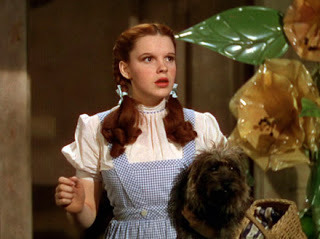
"You're out of the woods, You're out of the dark, You're out of the night.
Step into the sun, Step into the light.
Keep straight ahead for the most glorious place
On the Face of the Earth or the sky.
Hold onto your breath, Hold onto your heart, Hold onto your hope.
March up to the gate and bid it open."

"New York Allows Same-Sex Marriage, Becoming Largest State to Pass Law
By Nicholas Confessore and Michael Barbaro
Published: June 24, 2011. The New York Times
ALBANY — Lawmakers voted late Friday to legalize same-sex marriage, making New York the largest state where gay and lesbian couples will be able to wed and giving the national gay-rights movement new momentum from the state where it was born.
The marriage bill, whose fate was uncertain until moments before the vote, was approved 33 to 29 in a packed but hushed Senate chamber. Four members of the Republican majority joined all but one Democrat in the Senate in supporting the measure after an intense and emotional campaign aimed at the handful of lawmakers wrestling with a decision that divided their friends, their constituents and sometimes their own homes.
With his position still undeclared, Senator Mark J. Grisanti, a Republican from Buffalo who had sought office promising to oppose same-sex marriage, told his colleagues he had agonized for months before concluding he had been wrong.
"I apologize for those who feel offended," Mr. Grisanti said, adding, "I cannot deny a person, a human being, a taxpayer, a worker, the people of my district and across this state, the State of New York, and those people who make this the great state that it is the same rights that I have with my wife."
Senate approval was the final hurdle for the same-sex marriage legislation, which was approved last week by the Assembly. Gov. Andrew M. Cuomo signed the measure at 11:55 p.m., and the law will go into effect in 30 days, meaning that same-sex couples could begin marrying in New York by late July.
Passage of same-sex marriage here followed a daunting run of defeats in other states where voters barred same-sex marriage by legislative action, constitutional amendment or referendum. Just five states currently permit same-sex marriage: Connecticut, Iowa, Massachusetts, New Hampshire and Vermont, as well as the District of Columbia.
At around 10:30 p.m., moments after the vote was announced, Mr. Cuomo strode onto the Senate floor to wave at cheering supporters who had crowded into the galleries to watch. Trailed by two of his daughters, the governor greeted lawmakers, and paused to single out those Republicans who had defied the majority of their party to support the marriage bill.
"How do you feel?" he asked Senator James S. Alesi, a suburban Rochester Republican who voted against the measure in 2009 and was the first to break party ranks this year. "Feels good, doesn't it?"
The approval of same-sex marriage represented a reversal of fortune for gay-rights advocates, who just two years ago suffered a humiliating defeat when a same-sex marriage bill was easily rejected by the Senate, which was then controlled by Democrats. This year, with the Senate controlled by Republicans, the odds against passage of same-sex marriage appeared long."Daniel A. Rabuzzi is author of the fantasy novel "The Choir Boats," available from ChiZine Publications in September 2009.
"The Choir Boats" explores issues of race, gender, sin, and salvation, and includes a mysterious letter, knuckledogs, carkodrillos, smilax root,
goat stew, and one very fierce golden cat.
(www.danielarabuzzi.com). Daniel blogs at Lobster & Canary about speculative fiction, poetry, history and the arts.
Published on June 26, 2011 05:45
June 19, 2011
Color Coordinated
 [Hans Hoffman, Indian Summer, 1959]
[Hans Hoffman, Indian Summer, 1959][David Gates, Color Run Riot, set to "Invisible Colors" by Russ Malone, posted May, 2011]
"There is a surprising disconnect between what children seem to know about colors and numbers and what they actually know when tested," writes Melody Dye of Stanford University in the latest issue of Scientific American Mind ("Why Johnny Can't Name His Colors," SAM, May/June 2011, pg. 48). "Nailing down just what 'red' or 'three' means is a difficult hurdle in mastering language, and even older children sometimes slip up and reveal a less than expert grasp of the concept."
 [Anish Kapoor, Dismemberment of Jeanne D'Arc, 2009]
[Anish Kapoor, Dismemberment of Jeanne D'Arc, 2009]Dye's research demonstrates that, even after hours of drilling, most two- and three-year-olds and children as old as six cannot identify colors accurately without contextual prompts. It appears that context is critical, which "may explain why children, across every language studied, invariably learn their nouns before their colors."
 [Frank Stella, Hyena Stomp, 1962]
[Frank Stella, Hyena Stomp, 1962]In English, color words may be especially tricksy because we tend to say "red balloon" rather than "the balloon that is red" (i.e., we typically use the adjective prenominally instead of postnominally). Order provides context: the brain must process the prenominal without the "hook" provided by the noun, so has a much wider spectrum of possible meanings to search. Using a postnominal construction helps "narrow 'red' to being an attribute of the balloon and not some general property of the world at large."
 [Scarlet Tanager]
[Scarlet Tanager] [Indigo Bunting]
[Indigo Bunting]Also, children tend to understand a color word used postnominally as a descriptor like "wet" or "sharp," whereas they see a color word used prenominally as being part of the object's name ("Indigo Bunting" versus "the bunting that is indigo").
 [Yves Klein, his patented blue]
[Yves Klein, his patented blue]Dye's findings slot in with the provocative research on the linguistic classification of color perception sparked by Brent Berlin & Paul Kay's Basic Color Terms: Their Universality and Evolution (1969), and most recently updated with the 2009 publication of The World Color Survey (Kay et al.) Click here and here for more.
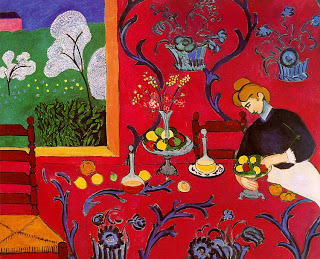 Daniel A. Rabuzzi is author of the fantasy novel "The Choir Boats," available from ChiZine Publications in September 2009.
Daniel A. Rabuzzi is author of the fantasy novel "The Choir Boats," available from ChiZine Publications in September 2009."The Choir Boats" explores issues of race, gender, sin, and salvation, and includes a mysterious letter, knuckledogs, carkodrillos, smilax root,
goat stew, and one very fierce golden cat.
(www.danielarabuzzi.com). Daniel blogs at Lobster & Canary about speculative fiction, poetry, history and the arts.
Published on June 19, 2011 05:13
June 12, 2011
Revisiting Bordertown; Returning to the Shire


The Way from the fields we know to the Border has re-opened: Holly Black and Ellen Kushner have edited a new volume of tales, poems and art from the Borderlands, Welcome to Bordertown (released last month by Random House).
Lobster & Canary was delighted this past Thursday evening to attend the NYC debut of the new collection, at Books of Wonder (an exceptionally appropriate venue; if you ever have a spare hour or three in the city, find your way to this Chelsea/Flatiron bookstore, which Lobster & Canary has known since its original site near Barrow & Hudson in the West Village). Kushner, Black, and co-authors Delia Sherman, Cory Doctorow, Alaya Dawn Johnson, and Annette Curtis Klause read to a large and appreciate audience, answered questions, and signed copies of the book. There was even a brilliant fiddler on hand-- Joe Kessler, a friend of Ellen's, a jack o' the green-- playing klezmer, bluegrass and other faerie reels, hints of the music along the Border.
We look forward to delving into the tome (a very generous 500-plus pages, all for just $20), whose authors are a Who's Who of speculative fiction, from bright new stars like Johnson, Cassandra Clare and Amal El-Mohtar (who presumably grew up with the original Bordertown stories) to established talents such as Kushner, Sherman, Doctorow, Neil Gaiman, Nalo Hopkinson, Jane Yolen, Patricia McKillip, Charles de Lint, Emma Bull, and Steven Brust. Christopher Barzak is here, Cat Valente, and Tim Pratt...and Terri Windling.
This is a reunion of Diana's tribe, Titania's court, our best modern-day druids...with wine in humble containers at Tompkins Square Park, over coffee at a diner on Queens Boulevard, in a tagged doorway on the Bowery. Somewhere Lord Dunsany and Hope Mirrlees are smiling.
*** *** ***
Meanwhile, in other news:
Unless you've been waylaid by goblins ("of the worst possible description") or trapped in conversation with Smaug ("it does not do to leave a live dragon out of your calculations, if you live near him"), you know that two weeks ago Warner Bros., New Line and MGM announced the release dates for the two Peter Jackson-directed films of The Hobbit : December, 2012 and December, 2013. Most of the cast from LOTR will be back, and shooting has begun on the WETA-designed sets in New Zealand.
Here is Jackson's first vlog of production on The Hobbit:
Daniel A. Rabuzzi is author of the fantasy novel "The Choir Boats," available from ChiZine Publications in September 2009.
"The Choir Boats" explores issues of race, gender, sin, and salvation, and includes a mysterious letter, knuckledogs, carkodrillos, smilax root,
goat stew, and one very fierce golden cat.
(www.danielarabuzzi.com). Daniel blogs at Lobster & Canary about speculative fiction, poetry, history and the arts.
Published on June 12, 2011 05:52
June 5, 2011
Remembering Gil Scott-Heron
Gil Scott-Heron died May 27th, just 62 years old.
I grew up on his music, his poetry, his philosophy: "The Revolution Will Not Be Televised," "The Bottle," "Winter in America," "We Almost Lost Detroit," "Pieces of a Man," "Whitey on the Moon," "Home is Where the Hatred Is," "Johannesburg."
I saw him only once, decades ago-- with Brian Jackson, at Brandeis University-- but the memory after all these years is like a ruby, red hot and burning in the night.
Scott-Heron never got his full due, but his influence is deeper than many realize and will--here's a prediction from Lobster & Canary-- continue to grow.
He called himself a "bluesologist." He was a cousin to the Beats, an uncle to the first rappers, a great-uncle to later hip-hop artists. Listen for his influence in work by Mos Def, Kwalib Tweli, Public Enemy, Erykah Badu, Arrested Development, Meshell Ndegeocello, The Roots, Common, Ludacris, Kanye West...too many to list.
Scott-Heron wrestled mightily, like Jacob at Peniel, with addiction and its collateral damage for many years, yet continued to produce art and was in the midst of a comeback with last year's
album I'm New Here.
He had regained his power. This is "Me and the Devil" from I'm New Here:
As Lobster & Canary mourns his passing, we think of his tribute to Billie Holiday and John Coltrane, and imagine him making music with them in some other place:
"Ever feel kinda down and out,
Don't know just what to do?
....
Ever feel that somehow, somewhere,
You lost your way?
And if you don't get a help quick,
You won't make it through the day?
Or could you call on Lady Day?
Or could you call on John Coltrane?
Now, they'll wash your troubles, your troubles,
Your troubles, your troubles
Away."
Click here and here for more on Scott-Heron.Daniel A. Rabuzzi is author of the fantasy novel "The Choir Boats," available from ChiZine Publications in September 2009.
"The Choir Boats" explores issues of race, gender, sin, and salvation, and includes a mysterious letter, knuckledogs, carkodrillos, smilax root,
goat stew, and one very fierce golden cat.
(www.danielarabuzzi.com). Daniel blogs at Lobster & Canary about speculative fiction, poetry, history and the arts.
Published on June 05, 2011 07:38
May 29, 2011
Leonora Carrington: Viva la reina!
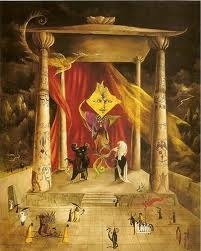
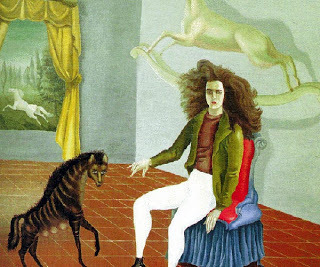
The grande dame of Surrealism, Leonora Carrington, died last week at age 94. One of modernism's greatest (if under appreciated) minds leaves us with a vibrant legacy of dream landscapes, obscured figures, hybrid animals, the eye of mythos.
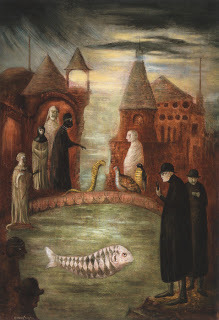
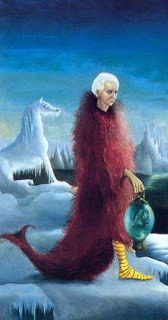
Carrington was one of the pioneering women who broke into the new old boy's club of modernist art (why was the "anxiety of influence" primarily a revolt of sons against fathers?). Her life-story was dramatic, her friends and rivals included Kahlo, Ernst, Dali, Miro, Picasso. For more, click here and here .
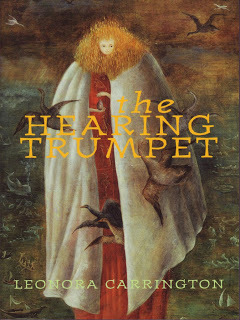
Lobster & Canary think we see her subterranean influence on many writers (Angela Carter perhaps) and artists (Marina Abramovic, Rebecca Horn) since. What a study that would be! And most intriguing: Carrington's putative, if unrealized, impact on many popular musicians of the past few decades. Think Madonna, Patti LaBelle, Annie Lennox, Grace Jones ("Slave to the Rhythm" reads like a Carrington painting come to life), Bjork, Missy Elliott.
Right down to relative newcomers such as Rihanna ("Disturbia," "Party Like A Rockstar"), Janelle Monae, Lady Gaga, and the Katy Perry of her Kanye West collaboration on "E.T."


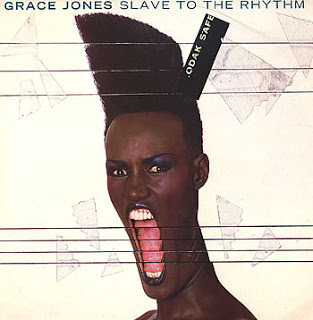
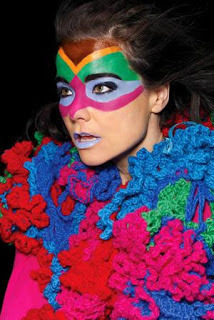 Daniel A. Rabuzzi is author of the fantasy novel "The Choir Boats," available from ChiZine Publications in September 2009.
Daniel A. Rabuzzi is author of the fantasy novel "The Choir Boats," available from ChiZine Publications in September 2009."The Choir Boats" explores issues of race, gender, sin, and salvation, and includes a mysterious letter, knuckledogs, carkodrillos, smilax root,
goat stew, and one very fierce golden cat.
(www.danielarabuzzi.com). Daniel blogs at Lobster & Canary about speculative fiction, poetry, history and the arts.
Published on May 29, 2011 09:39
May 22, 2011
Long Island City Open Studio Tour: "An Alien with Extraordinary Abilities" (Jose Carlos Casado); "A Numerical Family Portrait" (Tania Alvarez); "Numbers" (David Ferris)
Yesterday afternoon the Lobster & Canary visited dozens of artists in their open studios as part of the first-ever Long Island City Arts Open Festival (click
here
for more).
Long Island City (on the westernmost edge of Queens, with spectacular views of midtown Manhattan right across the East River) has a long-standing community of artists and the community is growing. LIC is-- along with Mott Haven in the Bronx, and Gowanus, Red Hook, Greenpoint and Bushwick in Brooklyn-- becoming what Soho and East Village were in the 1980s and DUMBO and Williamsburg were at the turn of the century: a hotbed of eclectic artistic innovation.
We saw many finely wrought, beautiful and thought-spurring works by established artists, e.g., Elliott Lloyd, Marilee Cooper, Janya Barlow, Gustavo Schmidt. We'll feature them in future posts, but want today to highlight three up-and-coming talents to watch: Jose Carlos Casado, Tania Alvarez, and David Ferris.

Casado (his site is here ) is a surrealist of the first order. We loved his 3-D film-- part of his "An Alien with Extraordinary Abilities" series-- of an ostrich (slightly Looney Toon-ish) running in slow motion and in place, in the foreground of a very pedestrian, slightly smudged, greyish village scene. (You can watch this, and other of his mystifying short films, on his website). He inserts elephants in domestic settings, entices viewers with sly-looking dragons, merges bodies in his "Matrix" and "New Bodies" series and more.
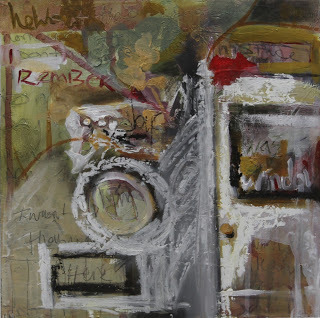
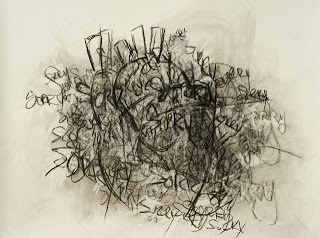
Alvarez (her site is here ) is developing a vocabulary of memory, loss, and the passage of time with her multi-media works. We were enthralled with two of her pieces in particular, paintings with ticking clocks embedded in a canvas carefully strewn with letters and numbers. When we asked the title of the larger piece, Alvarez smiled and said that she had not yet found a suitable title, but that the painting was a "numerical family portrait." (Her disregard for title, at least for the moment, reminds me of the Baziotes quote: "One can begin a picture and carry it through and stop it and do nothing about the title at all"; indeed, though her style differs greatly from that of Baziotes, Alvarez's oblique narratives share something of Baziotes's sensibility). Alvarez reminds us of Twombly with her calligraphic elements, and of Stephen Hannock's miniscule, half-hidden textual contours to his Oxbow paintings. Alvarez's sense of composition also brings to mind Guston. In short, Alvarez has much to say and an intriguing way to say it...watch her closely.


Ferris also has a thing for numbers and letters, in his case creating almost Platonic ideal versions of them in exquisitely hand-carved and finished wood. Ferris is thinking about space and form in ways that echo Brancusi and Lewitt, combining a keen artisanal hand with the fractionating eye of a logician. His walls are covered floor to ceiling with supple drawings that both are and document the evolution of the form that Ferris then calls out of the wood. Click here for more of his beauty.Daniel A. Rabuzzi is author of the fantasy novel "The Choir Boats," available from ChiZine Publications in September 2009.
"The Choir Boats" explores issues of race, gender, sin, and salvation, and includes a mysterious letter, knuckledogs, carkodrillos, smilax root,
goat stew, and one very fierce golden cat.
(www.danielarabuzzi.com). Daniel blogs at Lobster & Canary about speculative fiction, poetry, history and the arts.
Long Island City (on the westernmost edge of Queens, with spectacular views of midtown Manhattan right across the East River) has a long-standing community of artists and the community is growing. LIC is-- along with Mott Haven in the Bronx, and Gowanus, Red Hook, Greenpoint and Bushwick in Brooklyn-- becoming what Soho and East Village were in the 1980s and DUMBO and Williamsburg were at the turn of the century: a hotbed of eclectic artistic innovation.
We saw many finely wrought, beautiful and thought-spurring works by established artists, e.g., Elliott Lloyd, Marilee Cooper, Janya Barlow, Gustavo Schmidt. We'll feature them in future posts, but want today to highlight three up-and-coming talents to watch: Jose Carlos Casado, Tania Alvarez, and David Ferris.

Casado (his site is here ) is a surrealist of the first order. We loved his 3-D film-- part of his "An Alien with Extraordinary Abilities" series-- of an ostrich (slightly Looney Toon-ish) running in slow motion and in place, in the foreground of a very pedestrian, slightly smudged, greyish village scene. (You can watch this, and other of his mystifying short films, on his website). He inserts elephants in domestic settings, entices viewers with sly-looking dragons, merges bodies in his "Matrix" and "New Bodies" series and more.


Alvarez (her site is here ) is developing a vocabulary of memory, loss, and the passage of time with her multi-media works. We were enthralled with two of her pieces in particular, paintings with ticking clocks embedded in a canvas carefully strewn with letters and numbers. When we asked the title of the larger piece, Alvarez smiled and said that she had not yet found a suitable title, but that the painting was a "numerical family portrait." (Her disregard for title, at least for the moment, reminds me of the Baziotes quote: "One can begin a picture and carry it through and stop it and do nothing about the title at all"; indeed, though her style differs greatly from that of Baziotes, Alvarez's oblique narratives share something of Baziotes's sensibility). Alvarez reminds us of Twombly with her calligraphic elements, and of Stephen Hannock's miniscule, half-hidden textual contours to his Oxbow paintings. Alvarez's sense of composition also brings to mind Guston. In short, Alvarez has much to say and an intriguing way to say it...watch her closely.


Ferris also has a thing for numbers and letters, in his case creating almost Platonic ideal versions of them in exquisitely hand-carved and finished wood. Ferris is thinking about space and form in ways that echo Brancusi and Lewitt, combining a keen artisanal hand with the fractionating eye of a logician. His walls are covered floor to ceiling with supple drawings that both are and document the evolution of the form that Ferris then calls out of the wood. Click here for more of his beauty.Daniel A. Rabuzzi is author of the fantasy novel "The Choir Boats," available from ChiZine Publications in September 2009.
"The Choir Boats" explores issues of race, gender, sin, and salvation, and includes a mysterious letter, knuckledogs, carkodrillos, smilax root,
goat stew, and one very fierce golden cat.
(www.danielarabuzzi.com). Daniel blogs at Lobster & Canary about speculative fiction, poetry, history and the arts.
Published on May 22, 2011 05:49



